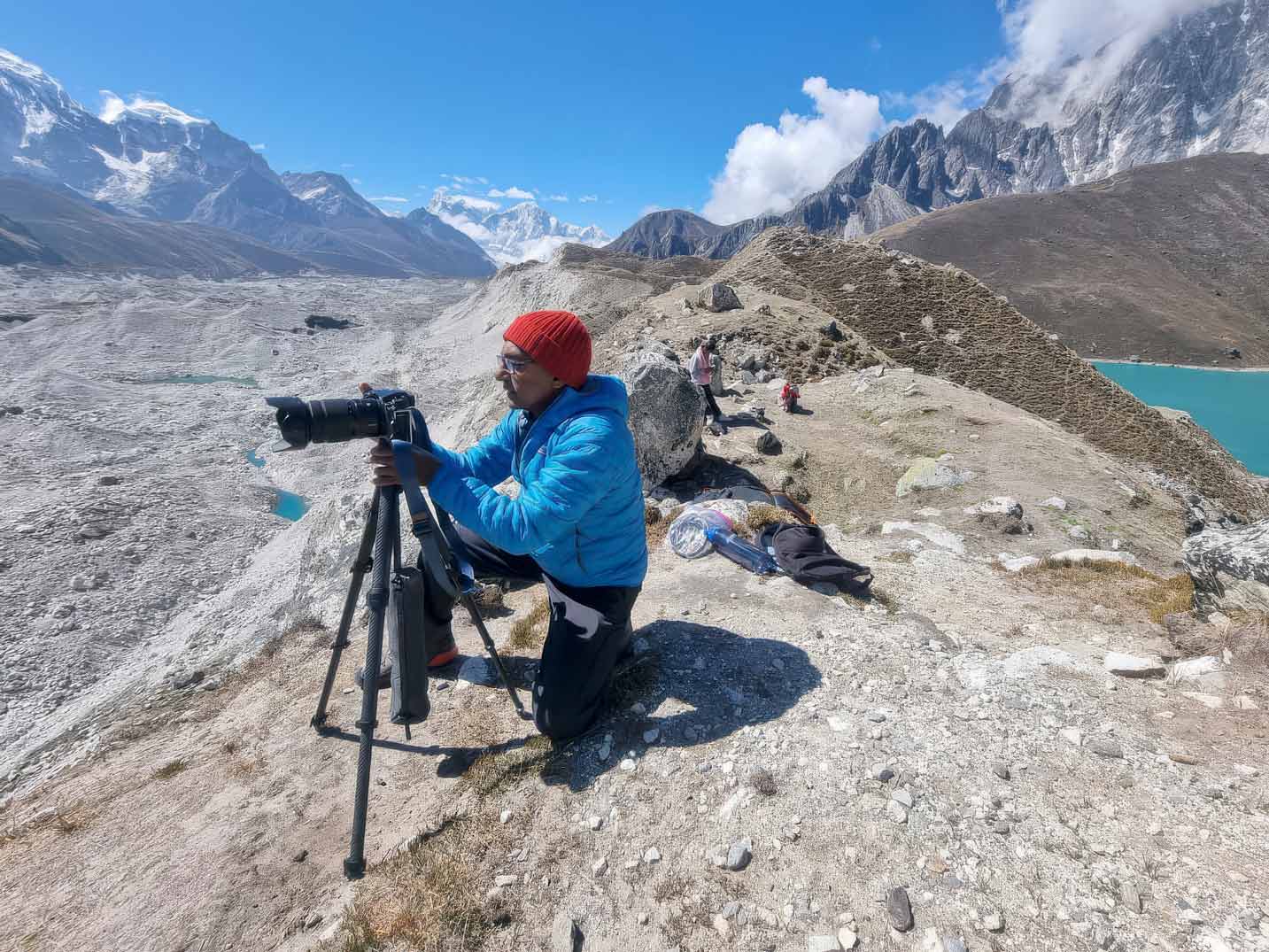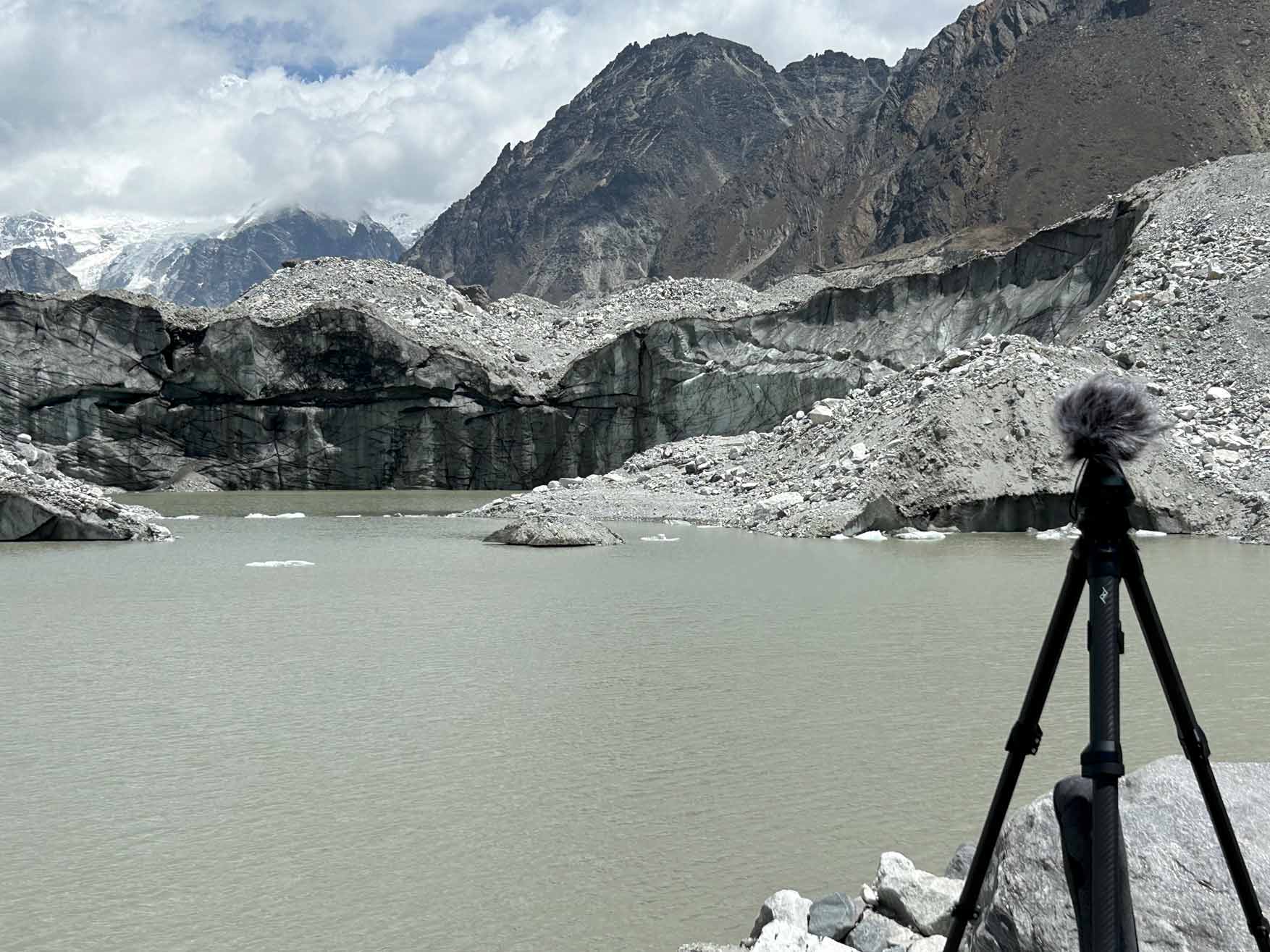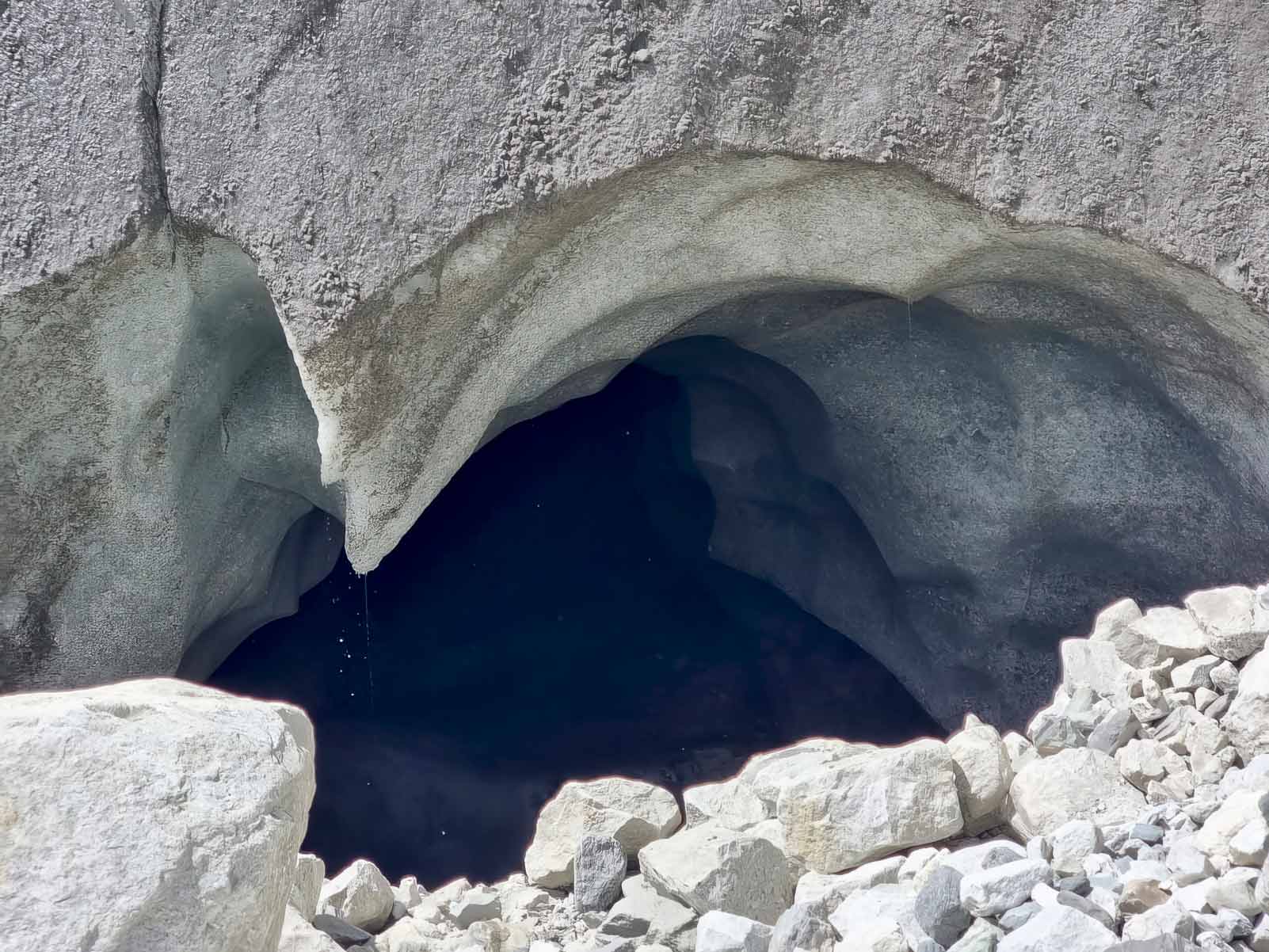Melting Icescapes / Black Landscapes - Visualising Glacial Melt in the Nepal Himalayas (Khumbu)
Project lead: Lingam. K

Project lead: Lingam. K

This practice-based research focuses on visualising and narrating the effects of the Anthropocene on the glaciers of the Nepalese Himalayas through a series of artworks using alternative photographic techniques.
Melting glaciers pose significant environmental risks, including floods, landslides, and loss of biodiversity. Additionally, they raise concerns about water security for the two billion people living downstream. The research explores how the syncretic narrative of scientific knowledge, cultural knowledge, and lived religion can offer fresh perspectives on visualising and increasing the awareness of glacial melt in the Nepal Himalayas.
The interdisciplinary approach draws on sensory ethnography to rethink the potential of how creative practices, local cultural knowledge and science can inform and shape our understanding of the environmental consequences of daily activities. The research outcomes will include photographs, field recordings, and interviews/narratives reflecting climate change's impact on the region's environment, people and cultural practices.
Carousel with three slides shown at a time. Use the Previous and Next buttons to navigate, or the slide dot buttons at the end to jump to slides.

Photographing the Ngozumpa Glacier and its surrounding mountains from the glacier’s moraine just above Gokyo village. A glimpse of Gokyo lake is seen on the right of the image.

Ngozumpa Glacier is the largest glacier in Nepal and in the Himalayas. It is 36 kilometres long and a large part of it is debris covered. Due to warmer temperatures the glacier is shrinking, thinning and continuous to retreat which produces meltwater. The meltwater has formed lakes, and their numbers continue to increase.

Recording ambisonics sound at the edge of the glacial lake. It records a full sphere surround sound, from multiple angles.

As the glacier melts, and the meltwater drains away, in some areas ice caves are formed. A microphone was placed in front of the ice cave to record the sounds of the ice melting and instances of landslide.
To read the full image descriptions, please click on the individual image above.
*Image credits
Acknowledgement of Country
RMIT University acknowledges the people of the Woi wurrung and Boon wurrung language groups of the eastern Kulin Nation on whose unceded lands we conduct the business of the University. RMIT University respectfully acknowledges their Ancestors and Elders, past and present. RMIT also acknowledges the Traditional Custodians and their Ancestors of the lands and waters across Australia where we conduct our business - Artwork 'Sentient' by Hollie Johnson, Gunaikurnai and Monero Ngarigo.